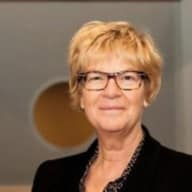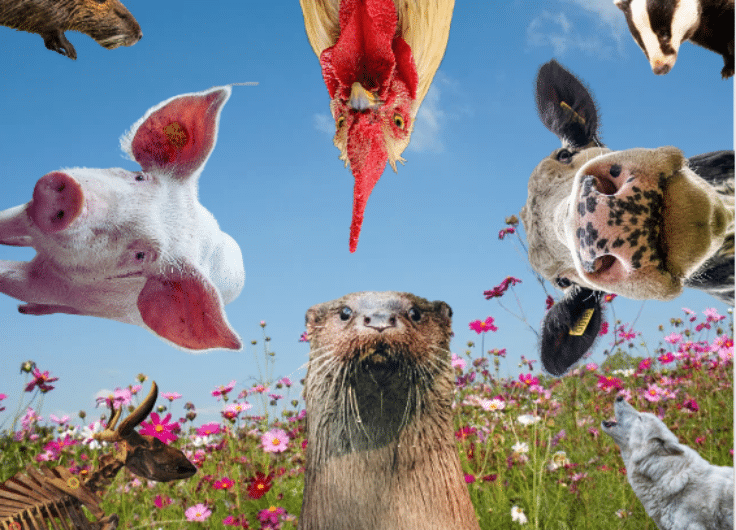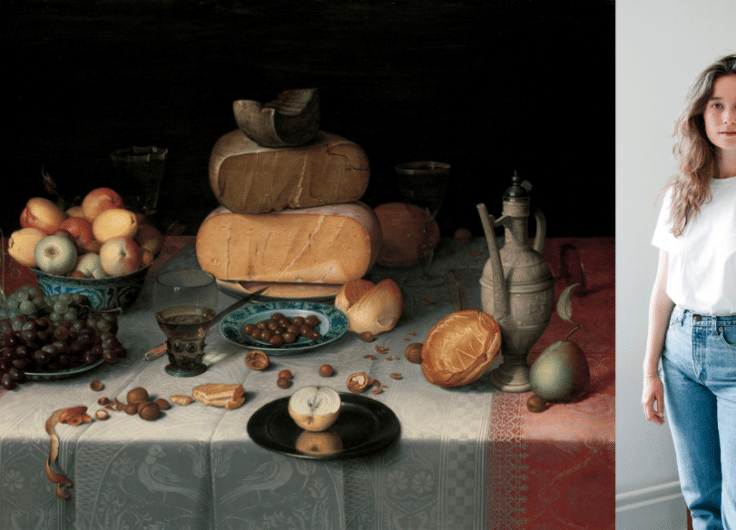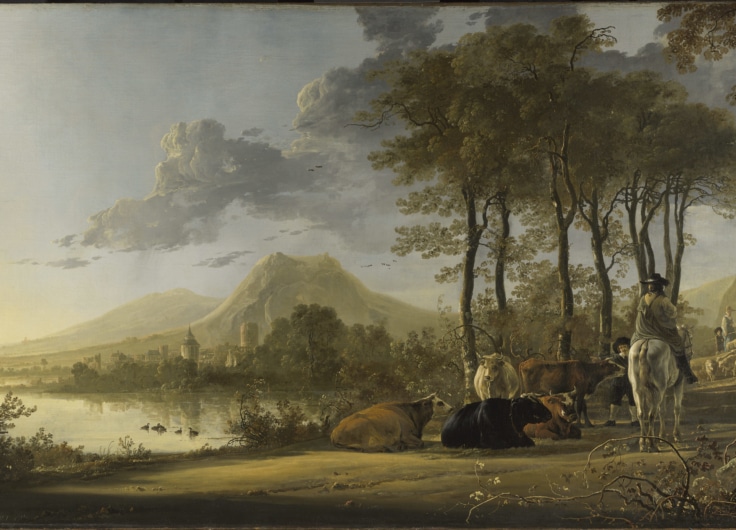There Is More to the Cow’s Voice Than Just Moo
Dairy cows are not merely suppliers of dairy products to supermarkets; they are social beings that communicate with each other and with humans. However, sociolinguistics has paid little attention to this kind of interaction. Leonie Cornips aims to shed light on this through her language research on cows.
No, in this story, my focus shifts from the familiar subject in sociolinguistics – humans – to a completely different kind: the dairy cow. The voice of the cow may exist, but it struggles to resonate in the ongoing nitrogen debate or in the farmer protests currently taking place in the Netherlands.
I study interactions among cows and between cows and humans in various situations. The aim of my research? To listen, observe, and interpret the “voice” of the cow. To make that possible, I view language as the interplay of sound, eye contact, movement, facial expressions, and sensory behaviours that convey meaning through taste, touch, hearing, sight, and smell within a specific context. For instance, when cows are eating, being milked, playing, or experiencing agitation in the cowshed.
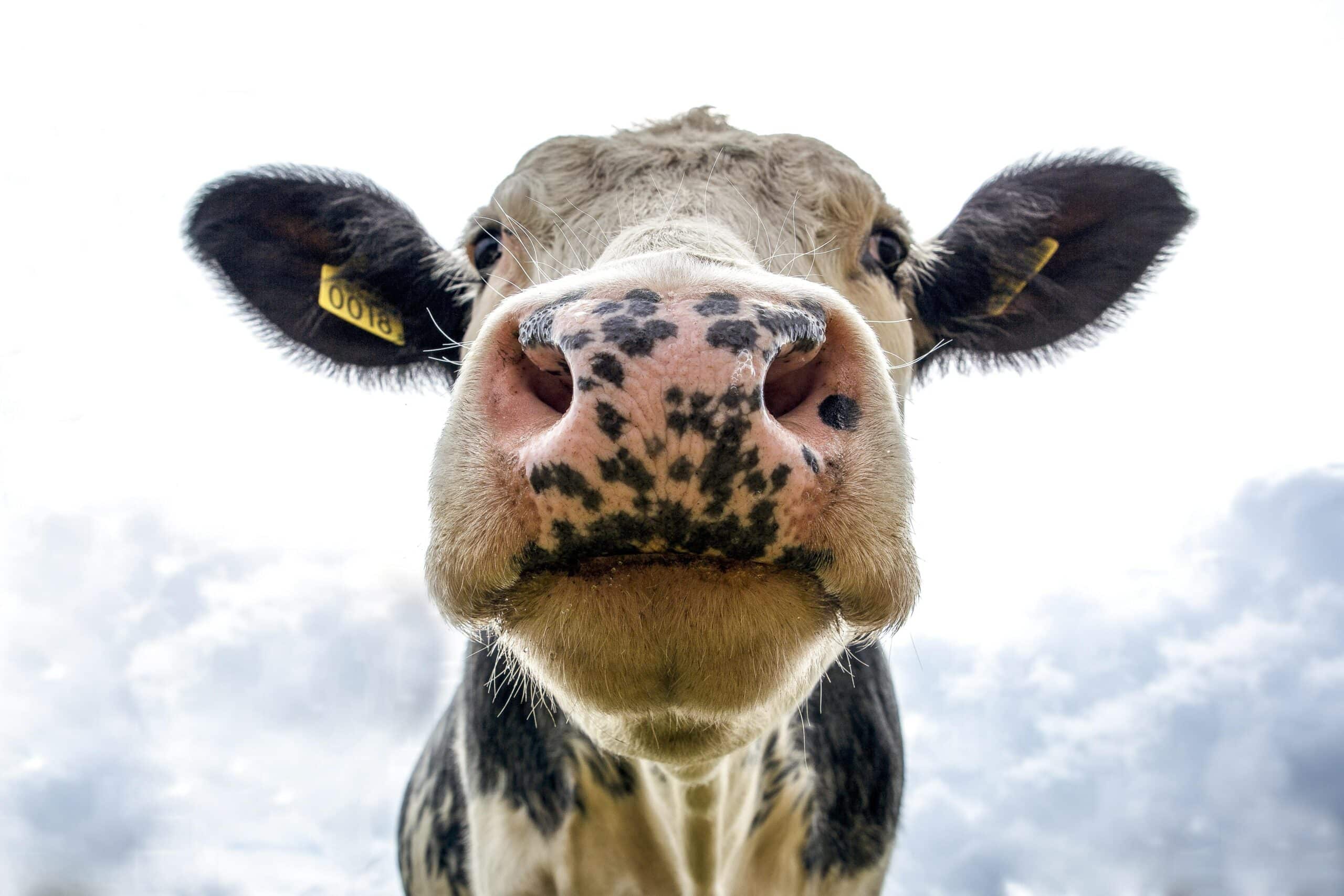 Cows are social beings that communicate with each other and with humans.
Cows are social beings that communicate with each other and with humans.© Jan Koetsier / Pexels
In sociolinguistic theories, little to no attention is given to interactions among animals and between animals and humans, as well as the power dynamics between humans and other species. Sociolinguists generally operate under a strict separation between humans and non-human animals in their research. My research seeks to expand the field of sociolinguistics by including animals.
Sociolinguistic research on animals offers the opportunity to develop a relational framework where we can truly understand the animals on their own terms, treating them as more equal. This framework takes a non-anthropocentric approach and poses a fundamental question: what is happening? This question differs greatly from the two primary questions in sociolinguistics. Firstly: what kind of linguistic form is this? Is it, for example, a verb or a phoneme? In such research, language is understood as a code. And secondly: how do speakers identify themselves through their linguistic practices? For example, how do people communicate when cooking together in a group setting? Here, the focus of the research shifts to the speaker.
Despite the historical connection and intensive interaction between dairy cows and humans, we know much less about the social behaviour of dairy cows
A sociolinguistic approach to dairy cows thus tackles two research problems. Firstly: how can we move away from a human-centered approach in research, both theoretically and methodologically, particularly within the highly asymmetrical power relations between dairy cows and humans? And secondly: how can we bridge the knowledge gap in sociolinguistics concerning interactional, and communicative expressions of individual animals?
Despite the historical connection and intensive interaction between dairy cows and humans, we know much less about the social behaviour of dairy cows compared to companion animals, possibly because we consider the milk and body of a dairy cow as commodities. Nevertheless, dairy cows are inherently social creatures, much like humans.
Field research: brushing, milking, feeding
Since mid-2018, I have been conducting ethnographic field research that focuses on the dairy cow, utilizing long-term and systematic observations in various cowsheds. Ethnography rejects the categorical separation between humans and non-human animals, which makes it well-suited for studying evolving communities that have not yet been explored in a sociolinguistic project, such as dairy cows. The precise focus of the observation is: how do the cows relate to other cows, the farmer, caretakers, and their (whether or not experienced) activities and expertise? And how do they relate to objects such as chains, fences, robotic feeding and milking systems, and tractors?
I’m acquiring knowledge from cows, through physical interactions such as brushing, touching, milking, feeding, walking, and being with them
I can only get to know the cow from a human perspective, of course. I’m not acquiring knowledge about cows, but rather, from cows, through physical interactions such as brushing, touching, milking, feeding, walking, and being with them. In my field notes, I document my thoughts, smells, sensations, sights, sounds, and flavours. In this approach, knowledge is collaboratively generated by humans and dairy cows. Hopefully, this research will contribute to ethical questions about species, such as: how can we study non-human animals as individuals in a specific situation in a respectful manner?
From my ethnographic fieldwork, I will now describe four examples of how dairy cows socially organize themselves in various situations, in different relationships with humans and among each other. With the question of what is happening in mind, I try to obtain the best possible understanding of the sociolinguistic repertoire of a dairy cow: what sounds does the cow produce, along with the alignment of her body, the position of her ears and tail, and so on.
In a closed cowshed: a cow greets
In a closed cowshed where only a few different people enter, a dairy cow may show recognition towards a person entering the stable. The cow turns her face towards the person entering, makes eye contact, positions her ears sideways, and produces a nasal-sounding mmm-sound that resembles a human “moo” sound.
This interplay of sound with bodily behaviour is solely produced by the cow when a human enters “her” stable, thus exemplifying spatial and temporal coordination. Hence, I interpret this sound as a greeting. The occurrence of this greeting is tied to the cow’s personality (not all cows greet), the specific conditions of the barn (with closed sidewalls and a roof), and the limited number of people who enter the cowshed. When people greet each other, this often involves physical contact: giving a kiss or a handshake, a pat on the shoulder, or a hug. With cows, that physical contact, including nuzzling with the nose and licking, is not possible because they are restricted to walk towards the person entering the stable by the presence of fences.
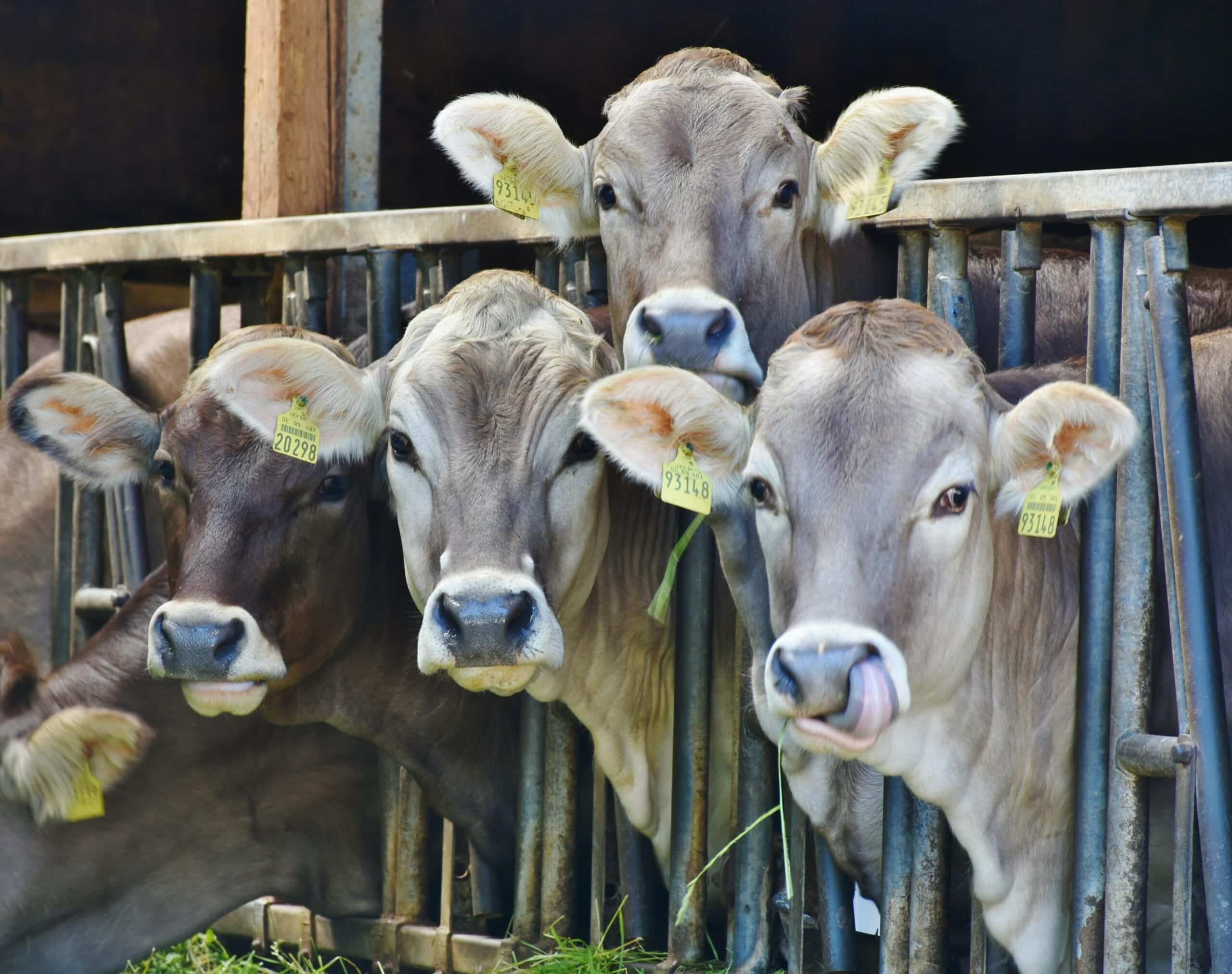
© Pixabay
The delivery room: after calving
In intensive farming systems, a cow that is about to calve often gets her own space to give birth, known as the calving pen. In the Dutch dairy industry, it is customary to separate newborn calves from their mothers immediately after birth. However, during one of my observations, the farmers had to leave, allowing the mother to stay with her calf for seventeen minutes after giving birth before the calf was taken away. During these seventeen minutes, the mother could stand up after giving birth and lick her calf intensively, with her ears positioned sideways and slightly forward, while producing a very low and short “moo” sound with her mouth closed.
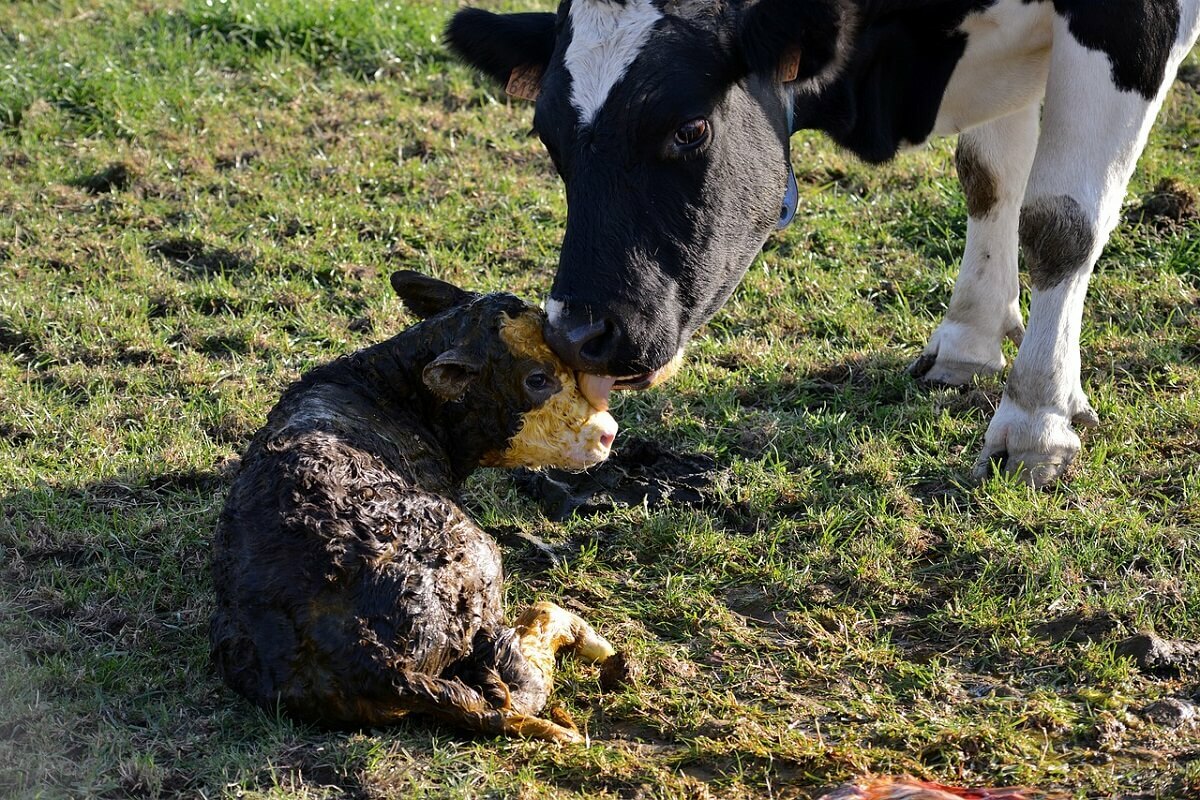 After giving birth, the mother licks her calf intensively.
After giving birth, the mother licks her calf intensively.© Public Domain
The sand barn: ‘Stay where you are’
At the cow sanctuary De Leemweg, cows (both oxen and females) live together for extended periods of time. Most of the animals still have their horns. From a “production perspective,” a significant number of cows are considered old, with the oldest one in 2022 being Wakamoe at twenty-three years of age. In the sand barn, I observed how the cows recognize Bert Hollander, the initiator of the cow sanctuary and their daily caretaker, with a gentle sound when he walks by, despite the barn being completely open (as mentioned above). While observing, I saw a cow in the sand barn rubbing her shoulders and back against a green cow brush.
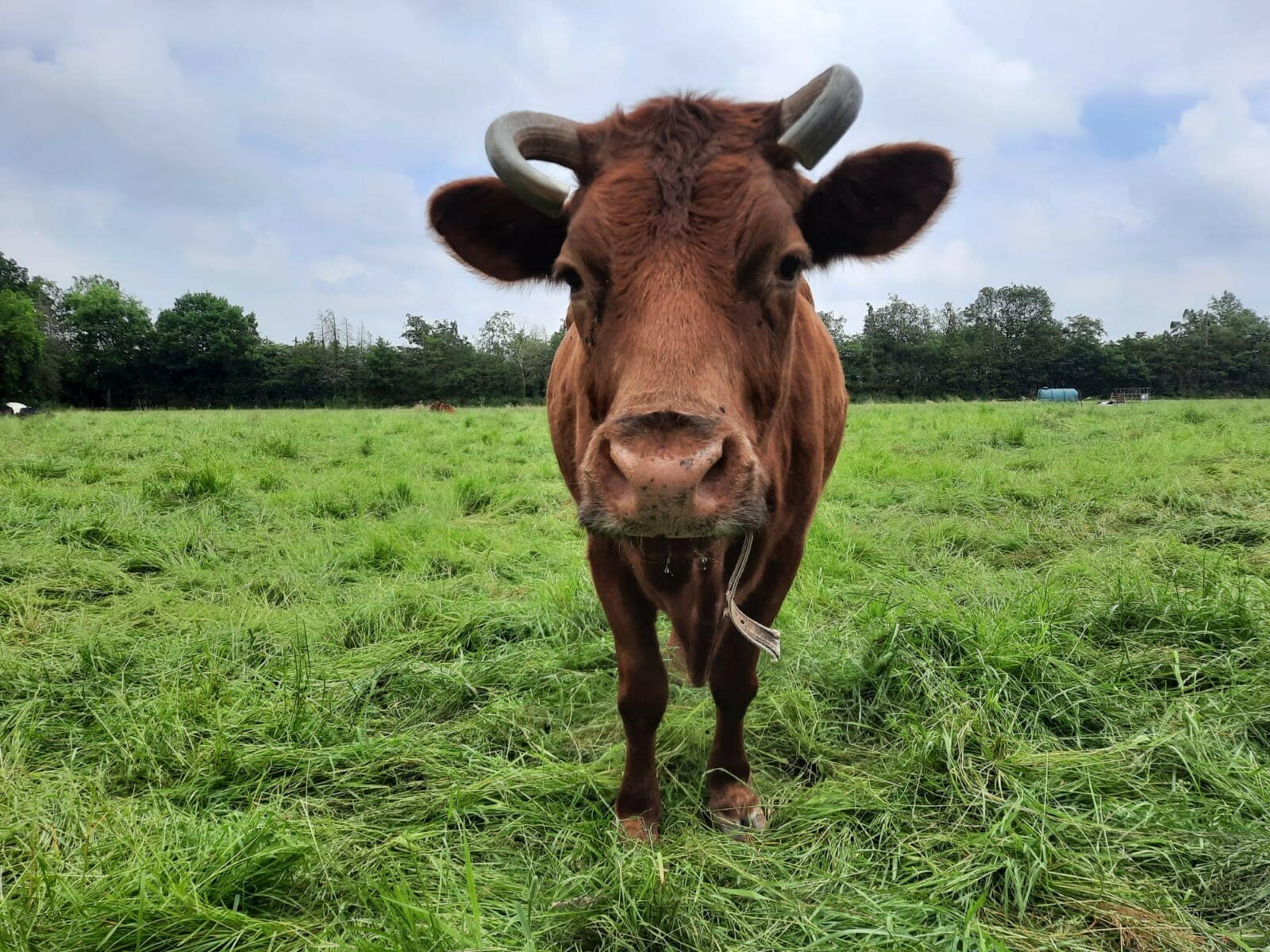 Wakamoe, the oldest cow in sanctuary De Leemweg
Wakamoe, the oldest cow in sanctuary De Leemweg© Bert Hollander
She let out a tense, deep “moo” sound three times, directed at another cow that was approaching her, as if she was saying: “I’m unable to move swiftly due to my old, stiff, and creaking body, so don’t come any closer.” Or perhaps in a more straightforward manner: “I’m right here, so stay where you are.” The approaching cow indeed did not move closer to her.
A small herd living outdoors: a summoned calf
In the spring of 2018, I was looking for shelter and pasture for a calf (named Piet) that I adopted during my fieldwork. Eventually, the calf was welcomed by a small herd. This herd consisted of three adult females, including Cato, who took Piet under her care from the beginning. The small herd remained outdoors day and night, in both summer and winter, but they were able to seek shelter in a small shed with a roof and closed sidewalls.
When Piet was about eight months old, driven by curiosity, he ventured into the space where he used to be fed milk and where other cows remained unseen. Cato, who was standing nearby in the field on the other side of the fence, called out to him. In doing so, she looked at him (his back), stretched out, and raised her head with her ears positioned sideways to produce a moo sound with an open mouth for about one and a half seconds, with an intensity ranging from thirty to ninety decibels. The sound frequency rose from the low hundred-hertz range to (well) above five hundred hertz, rapidly increasing by more than two octaves. The flat final part had a sound frequency of five hundred hertz. This time, perhaps due to the barking dog in the enclosed garden, Piet swiftly responded. Just six seconds after Cato’s call, he returned to her and the herd behind the fence.
Equal
Based on my fieldwork examples in multiple cowsheds, it is evident that a cow can produce distinct sounds (accompanied by specific bodily behaviours) that hold meaning for other cows (including the calf) depending on the cowshed and situation. The voice of the cow can be heard when humans no longer place themselves at the centre of sociolinguistic research and approach the cow as a more equal individual (both theoretically and methodologically).
This new research is expected to contribute to a deeper understanding of the cow’s voice among those who professionally interact with her. Furthermore, this research will help to ensure her voice is heard in the ongoing societal debates concerning climate change, biodiversity loss, and nitrogen concerns.

